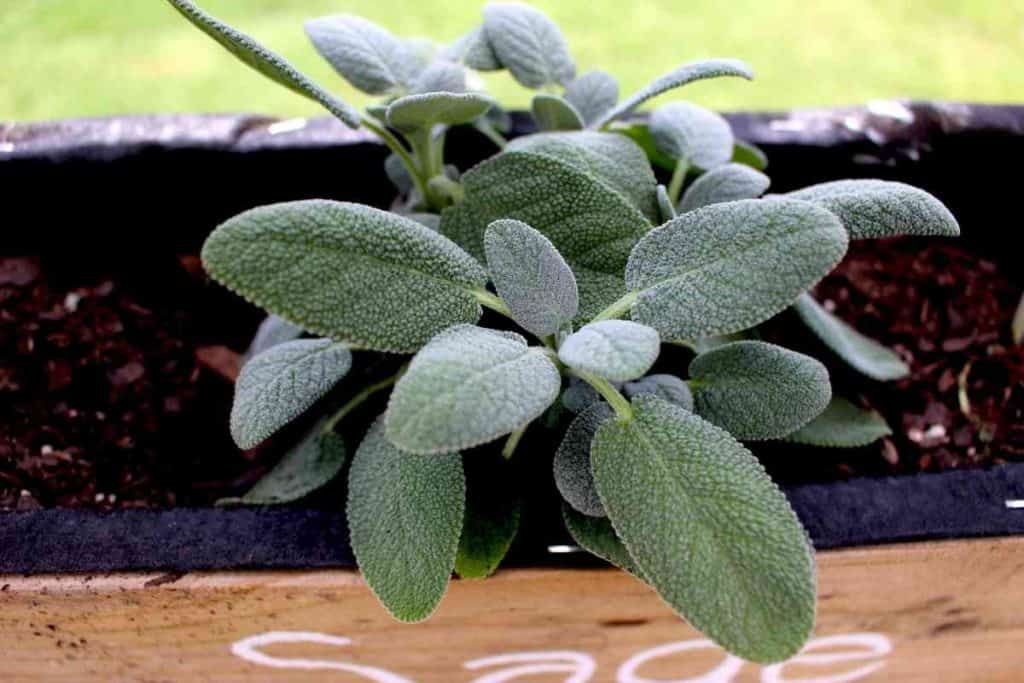Many small-scale gardeners that are into various herbs, shrubs, and flowers, are often confused (and rightly so) as to what kind of plant Sage is, especially based on its flowering seasons, time zones, and harvest time. Is sage a perennial or annual?
If you want to get clarity on this puzzle, then you must know the answers to this question and why it is so.
Naturally, a sage is considered a perennial that grows back year after year each spring, especially if you are around zones 5 to 8. However, if you live around cones 9 and further south, you consider sage as annual.
But there's more to it, which we'll discuss in this article!
Table of Contents
What Is A Sage?

Scientifically known as Salvia officinalis, sage is among the easy-to-grow perennial shrubs or herbs. It has other names like common sage, culinary sage, and garden sage and comes from the mint family of Lamiaceae. Sage has its origin in the Mediterranean regions and is commonly grown for its aromatic edible leaves.
The semi-shrubby plant has wooly, gray-green, aromatic, ovate leaves that can spread up to 4 inches long. Its leaves are mostly used fresh or dried as ingredients or spices for many foods, including as stuffing for poultry and pork and in sausages. During the summertime, it tends to develop spikes of blue-purple flowers.
You can grow sage shrubs during the spring or fall and grow as tall as 60cm (2 feet) tall. Even though its oval-shaped leaves are rough or wrinkled (often downy), you can grow some of the sage’s varieties as ornamentals because of their beautiful leaves and flowers that feature a variety of colors ranging from gray-green to whitish green.
Because of its tubular two-lipped corollas features, different pollinators like bees, butterflies, and hummingbirds get attracted to the sage.
On the other hand, the flowers feature spates of purple, pink, white, or red colors and produce nutless fruits. It contains essential oil of about 2.5%, the most notable of which are thujone and borneol.
Is Sage A Perennial or Annual?
Naturally, sage is a perennial shrub that you can also prune and regrow as an annual plant after each season.
However, it is considered a natural perennial that you can prune and plant again as an annual plant after each season.
To put it more clearly, a sage can be regarded as both a perennial and an annual, depending on the growing zones you live in. For instance, in zones 5 to 8, it can be considered a perennial, as you can regrow them yearly in every spring. On the other hand, in zones 9 and upward south, you can consider an annual or one-year plant.
As a perennial plant, it can grow for many years before completing its life cycle or replanting. If you want to be completely clear on this topic and ensure the successful growth of your sage, you must have a better understanding of your USDA hardiness zone and the need to grow sage and voila.
See Also: How Often Should You Water Sage?
Does Sage Come Back Every Year?
Since sage is a perennial, it comes back every year, even though you can keep it as an annual or overwinter indoors outside of its growing zones.
Does Sage Need to Be Cut Back?

Yes, sage needs to be cut back, but the best time is during the early spring. If you cut the leaves before winter, it might be difficult for the plant to survive the winter period.
In February, you can cut back the shoots to around 5 cm. After cutting back, the sage will germinate fresh ones and become bushier once the weather improves.
Can Sage Survive The Winter?
Like some herbs like bay and thyme, sage is hardy enough to tolerate the winter outdoors yet will hardly grow. Therefore, you must protect them from the frost season if you want to get the best out of them. Move them into an unheated greenhouse or conservatory if possible.
How Long Do Sage Plants Live?
Sage plants can last for many years if well-cared for, harvested, and pruned every season. However, most gardeners have realized that their sage plants tend to become woodier with each passing year, that even before the third year, the plant will no longer be productive or flavorful.
Does Sage Plant Spread?
Sage plants can grow as tall as 2 to 3 feet tall and spread to around 18 to 24 inches wide. It thrives when planted as a low background herb plant on a border with other herbs and in its bed.
It can be invasive (especially the Mediterranean variety). Therefore, the best place is in a container to avoid invading other garden areas.
Is Sage Perennial in the UK?
Yes, sage is perennial in the UK. It is a common herb used to produce stuffing and spice in meat dishes. It has its origins in the Mediterranean region, yet it is a hardy perennial and requires little skills for its successful growth.
What Can I Not Plant with Sage?
You can plant sage with broccoli, cauliflower, rosemary, cabbage, and carrots. It serves as a deterrent to cabbage moths, beetles, black flea beetles, and carrot flies. On the other hand, do not grow close to cucumbers, onions, or rue.
Can I Plant Rosemary & Sage Together?
Certainly, you can, as sage is only one of a few shrubs that thrive when grown alongside rosemary. If you grow them together, it will produce an intense herb garden.




